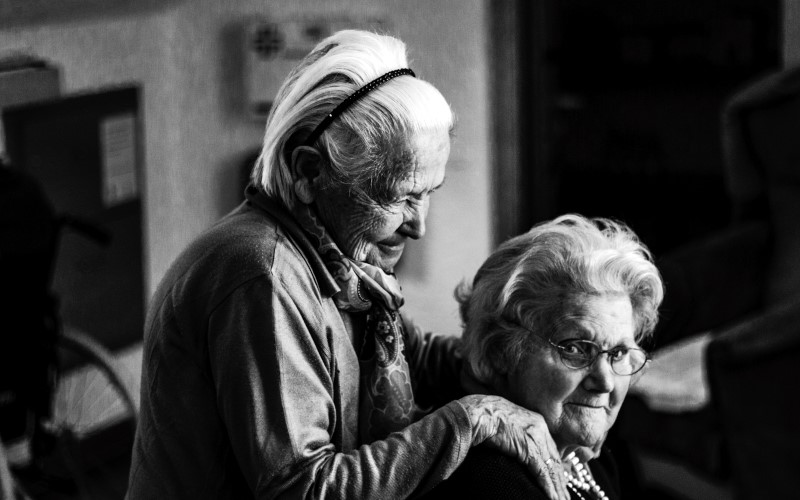The best interests of older people are not uppermost in this government’s thinking. Referring to older people requiring care as “consumers”, describing the transfer of residents to hospital as “decanting”, talk of “cohorting” residents into specific sections of a home and other dehumanising language set the scene for its priorities. Using aged care homes as a dumping ground to provide work for people who are unemployed is just the latest ploy, writes Dr Sarah Russell.
What are the federal government’s priorities regarding aged care? To ensure the frail and vulnerable in aged care homes spend time surrounded by family and friends or to provide jobs for the newly unemployed due to the pandemic?
A 15-minute rapid antigen screening test is available that would allow aged care homes to do real time testing of all visitors and staff. Although not as accurate as the widely used PCR tests, rapid antigen testing in conjunction with training in infection control would give peace of mind to all when families visited their loved ones in aged care. So why has the federal government instead funded “aged care visitation assistants”?
Providers claimed they kept families out of aged care homes to protect residents from Covid. However, with outbreaks in 223 homes and the deaths of 678 residents, procedures to protect residents clearly failed.
We have been told the “aged care visitation assistants” will enable families to visit aged care homes safely. It is unclear what the evidence is for such claims. Yet a test that is 84% – 98% accurate (the rate for the rapid antigen test) is surely safer than employing a “caring, empathetic and friendly personality” to greet visitors at the door with a thermometer and a list of questions.
Dumping ground for unemployed people
The aim of this latest initiative from the federal government is to place into aged care homes large numbers of people who have lost jobs in other sectors. This is not the first time aged care homes have been used as a dumping ground for people who have found themselves unemployed. During the Howard era, recipients of unemployment benefits were sent into aged care homes as part of the “work for the dole” scheme.
“Good quality staff with the right skills and the right training is fundamental to good care.” So said Sean Rooney, the CEO of aged care lobbyists Leading Aged Services Australia (LASA) on ABC’s Q&A program last year.
When the pandemic hit in March, LASA announced it could train aged-care assistants in just 10 hours as part of a “redeployment initiative”.
LASA collaborated with Altura Learning and the recruitment firm Dash Group to put in place this 10-hour training course. According to a report in The Saturday Paper, a senior source in the aged care sector said in May that it was “astonishing” that “even lower-skilled staff are being snuck into aged care under the cover of Covid-19”.
Suitably trained in 10 hours?
According to Dash Group: “The aged care assistant role is designed as a temporary support to the aged care sector by providing sufficient numbers of suitably trained (my italics) staff to support safe and continuous care for aged care residents.”
Working in an aged care home is a demanding job that requires specific expertise. It is simply not possible to be “suitably trained” in 10 hours.
Furthermore, have these aged care assistants now simply been re-branded “aged care visitation assistants”?
Regardless, free labour for eight weeks under the visitation scheme will no doubt help the bottom line of all aged care providers. Regis Health Care, which has 65 aged care homes and is one of the biggest players in the sector, has taken advantage of the visitation scheme. And Regis has great timing, it seems, with Rob Millner (Soul Pattinson) recently launching a $550 million takeover bid for the company.
Coalition Spin Kings: real reform in aged care trumped by re-announcements and a deluge of cash
Rooney also announced on Q&A that LASA was undertaking research on optimal staffing models across all the models of care. When asked for a copy of the research findings, LASA’s senior media & communications advisor could not find them.
Preparing for staff ratios?
LASA’s May proposal of its 10-hour training program was also curious timing. The Royal Commission into Quality and Safety has heard evidence of the low numbers of staff in some aged care homes. It is possible that the royal commissioners will mandate staff/resident ratios. Is LASA preparing its members for this possibility?
My concern is that unscrupulous providers will be able to say they are “in ratio”, even though it will be poorly trained assistants making up the numbers. I hope I am wrong. However, the aged care sector is rife with unscrupulous providers who prioritise profit over care, secrecy over transparency, and dishonesty over integrity.
On national television, LASA claimed: “Good quality staff with the right skills and the right training is fundamental to good care.” I’m not sure how that fits in with LASA parachuting lower-skilled staff into aged care under the cover of COVID.
Tone deaf: aged care providers’ PR campaign strikes wrong note
Dr Sarah Russell is a public health researcher. She is the Principal Researcher at Research Matters and Chair of Progressives of the Peninsula. She was formerly the Director, Aged Care Matters.

